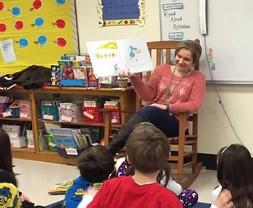 ~ By Amanda Smith February 24 was World Read Aloud Day. As part of my second grader’s class activities, parents and other guests were invited to read to the students. Even though I had only 15 minutes, I arrived with arms full of my favorite picture books to share with these excited little ones. What a glorious start to my day! I had a diverse selection of books, but it soon became clear which ones got the kids’ attention. This caused me to ponder: What makes a great read-aloud book? Josh Funk, author of LADY PANCAKE AND SIR FRENCH TOAST, and PIRASAURS! once said that a picture book is actually a performance piece. If you think about it, most picture books are read aloud by adults to children. And following this logic, picture books should thus have clear stage directions. As writers, how do we cue our readers? 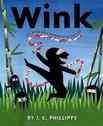 We have all read books where the voice of a character is so clear, you know exactly how it is supposed to sound. How can one read SKIPPYJON JONES ( Judy Schachner) without one’s muy muy mejor Spanish accent? Or not use one’s Mr. Miyagi voice for Master Zutzu in WINK, THE NINJA WHO WANTED TO BE NOTICED ( J.C. Phillips) ? “The Loudest cricket is the first to be caught.” The cadence and rhythm of the language itself directs the reading. 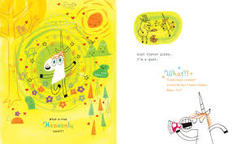 Sometimes, as in UNICORN THINKS HE’S PRETTY GREAT (Bob Shea), the typography gives clues as to where the accent should be. Printing Unicorn’s words in rainbow colors with little sparklies around them, brings out the sweetest of voices from the reader and helps distinguish between Unicorn and Goat’s voices in places where dialogue isn’t tagged. In WOLFIE THE BUNNY (Amy Dyckman), Dot’s desperate “He’s going to eat us all up!” is emphasized by using bigger capitalized words. Even a non-reader will look at that text and know Dot is yelling. 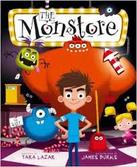 Punctuation is another tool a writer can use to direct the reading. Tara Lazar’s THE MONSTORE starts like this: “At the back of Frankensweet’s Candy Shoppe, under the last box of sour gum balls, there is a trap door. Knock five times, hand over a bag of squirmy worms, and you can crawl inside… THE MONSTORE.” All those commas, those stacked phrases, the ellipse, and the use of the power of three (times two) masterfully build so much tension on the very first page, that by the page turn, your kid will be in your lap. And you will be reading in your very best horror-movie trailer voice. Other times the stage directions come in the form of negative space. Negative space in language is created by pauses and silence. In RAGWEED’S FARM DOG HANDBOOK (Anne Vittur Kennedy), the humor of the delivery lies in the variation of long and short sentences. The short sentences (“Pigs lie in the mud all day and get bigger and BIGGER. That’s their job. That’s not your job. Don’t lie in the mud. Mud is lovely.”) allow for a deadpan delivery. As we know, comedy is all about timing and Kennedy brilliantly helps her readers deliver that timing with her sentence structure. Whether it is voice, cadence and rhythm, typography, rhyme, negative space, or punctuation, these tools help readers read our books the way we intended. This is why it is so important to read our works in progress aloud. And to read books in print aloud. And to read aloud to children, bringing printed language to life. I will be more aware of these tools as I work on my own manuscripts and hopefully, one day, they will become great read-alouds. In the meantime, is there a job where I can just read aloud to kids?
1 Comment
|
Peruse blogs for advice and tips from KidLit creatives.
Categories
All
Archives
April 2024
Click to set custom HTML
Click on the RSS Feed button above to receive notifications of new posts on this blog.
|
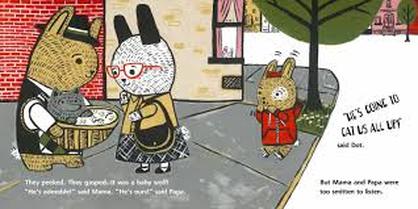
 RSS Feed
RSS Feed